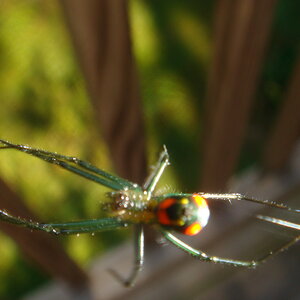duncanp
No longer a newbie, moving up!
- Joined
- Nov 15, 2005
- Messages
- 3,390
- Reaction score
- 43
- Location
- Sheffield
- Website
- www.duncanphilpott.com
- Can others edit my Photos
- Photos NOT OK to edit
After countless threads on what to choose, film or digital, and then what kind of film or digital camera I have decided to hopefully sum it all up into one thread that will be updated regularly.
Film or Digital?
Quality:
Digital cameras, especially Digital Single Lens Reflex cameras (DSLRs) are starting to match the quality of 35mm film. If you printed a 7x5in print from a 6 mega pixel (mp) or higher resolution camera, the difference between that and the quality of a 35mm film print at the same size would be indistinguishable. However with cameras 6mp-8mp the difference would start to become visible at A4 size prints at 300 dots per inch (dpi). Higher resolution cameras 9-16mp have no problem producing A3 size prints at 300dpi some models even being able to produce good quality a2 prints e.g. the Canon EOS 1DS MK II which is the best DLSR that canon provide. Fujifilm Velvia 35mm slide film scanned at a very good quality the equivalent to 16mp, the same as the Canon EOS 1DS MK II.
If you were to scan a medium format 6x4.5cm slide you get the equivalent of around 48mp, large format 4x5 around 240mp ! And large format 8x10 960mp!!
The resolution of the image is not the only thing that affects quality, the lens you use can have a great influence on this as well, the Canon L lenses are probably the best lenses around. Also the ISO rating of the film or the ISO you set your digital camera to affects the quality.
Costs:
With DSLRs dominating the camera market many people are ditching film and going digital, Film camera bodies are very cheap now and there is a reasonable amount in good condition second hand and cheaper, a top of the range 35mm SLR the Canon EOS 1V only costs £1259 whereas its digital equivalent the EOS 1DS MK II costs £4589. Medium format photography is also becoming very cheap and more available to a wider range of photographers, especially the Bronica ERTS / Si. With a lot of competition in the DSLR market DSLR prices fell by 23% and a budget DSLR can be bought for £325 (Nikon D50 body only).
Extra costs can be lenses, which normally work for both film and digital. Lenses design for 35mm cameras or full frame DSLRs will always work on a DSLR with a APS-C size sensor or any other size. A lens designed for a DSLR with a APS-c size sensor or anything smaller than full frame, will work on a 35mm SLR or a full frame digital camera but it will cause a lot of vignetting around the edge of your pictures. The main cost in film photography is sometimes the cost of film and getting it developed. Whereas in digital photography all you need to do is buy a memory card and keep reusing it, giving you the opportunity to shoot as much as you want at a minimal cost.
Although film cameras are getting less expensive and have better quality, especially if you move into medium format or higher, the costs of film and film developing really add up if you want to take a lot of pictures. The costs of digital cameras are coming down and are much more affordable. The fact that you only need to buy one memory card and reuse it means that you can shoot practically all the time and digital means you also get instant results on site, so that you can reshoot if you need to.
Digital SLR / SLR style or super zoom / Digital Compact
If you are thinking of buying a digital camera there are three main types ^.
The costs of each vary and each have the advantaged and disadvantages.
Digital Compact:
Most people nowadays have one of these and the price of them can vary from £30 to £300+, ranging from around 10mp to 1. Due to their size and ease of use many people have them on them the whole time and do not need much knowledge to use them. If you just want something for everyday snapshots, a digital compact is good, they normally have around a 3x optical zoom, set scene modes such as portrait, and auto mode and program mode.
A small amount of suggested models for a range of prices:
These are ideal for someone who wants to take photography a little more seriously and not take snapshots the whole time. These look like a DSLR and normally have manual exposure and more options to give you better control over your pictures. On average they have a 12x zoom about 36-432mm. although they have big zooms the majority are not well suited for fast actions sports and nature photography as they have shutter lag, where you press the shutter button and the shutter opens around 1/125 sec later. I use one of these as they are not as expensive as DSLRs and there arent many extra costs like lenses as you have on fixed lens. If you want there are accessories such as wide angle converters that give you a better wide angle lens and there are also telephoto converters. For mine, a Panasonic lumix fz-20, I have a filter adapter and filter set that allows me to use UV, FD and polariser filters.
A few of the best SLR styles:
These are the top of the range digital camera you can get. Loaded with feature they give you almost unlimited creativity. Suitable for all kinds of photography, the only downside is the cost of extra lenses can top that of the price of the camera body.
Beginner DSLRs (Body only):
Feel free to ask any Qus
Here's a database with all currently sold cameras, i made it mainly for my IT GCSE but it will help here as it has a list of current cameras.
http://www.duncanphilpott.com/cameradatabase.mdb
Film or Digital?
Quality:
Digital cameras, especially Digital Single Lens Reflex cameras (DSLRs) are starting to match the quality of 35mm film. If you printed a 7x5in print from a 6 mega pixel (mp) or higher resolution camera, the difference between that and the quality of a 35mm film print at the same size would be indistinguishable. However with cameras 6mp-8mp the difference would start to become visible at A4 size prints at 300 dots per inch (dpi). Higher resolution cameras 9-16mp have no problem producing A3 size prints at 300dpi some models even being able to produce good quality a2 prints e.g. the Canon EOS 1DS MK II which is the best DLSR that canon provide. Fujifilm Velvia 35mm slide film scanned at a very good quality the equivalent to 16mp, the same as the Canon EOS 1DS MK II.
If you were to scan a medium format 6x4.5cm slide you get the equivalent of around 48mp, large format 4x5 around 240mp ! And large format 8x10 960mp!!
The resolution of the image is not the only thing that affects quality, the lens you use can have a great influence on this as well, the Canon L lenses are probably the best lenses around. Also the ISO rating of the film or the ISO you set your digital camera to affects the quality.
Costs:
With DSLRs dominating the camera market many people are ditching film and going digital, Film camera bodies are very cheap now and there is a reasonable amount in good condition second hand and cheaper, a top of the range 35mm SLR the Canon EOS 1V only costs £1259 whereas its digital equivalent the EOS 1DS MK II costs £4589. Medium format photography is also becoming very cheap and more available to a wider range of photographers, especially the Bronica ERTS / Si. With a lot of competition in the DSLR market DSLR prices fell by 23% and a budget DSLR can be bought for £325 (Nikon D50 body only).
Extra costs can be lenses, which normally work for both film and digital. Lenses design for 35mm cameras or full frame DSLRs will always work on a DSLR with a APS-C size sensor or any other size. A lens designed for a DSLR with a APS-c size sensor or anything smaller than full frame, will work on a 35mm SLR or a full frame digital camera but it will cause a lot of vignetting around the edge of your pictures. The main cost in film photography is sometimes the cost of film and getting it developed. Whereas in digital photography all you need to do is buy a memory card and keep reusing it, giving you the opportunity to shoot as much as you want at a minimal cost.
Although film cameras are getting less expensive and have better quality, especially if you move into medium format or higher, the costs of film and film developing really add up if you want to take a lot of pictures. The costs of digital cameras are coming down and are much more affordable. The fact that you only need to buy one memory card and reuse it means that you can shoot practically all the time and digital means you also get instant results on site, so that you can reshoot if you need to.
Digital SLR / SLR style or super zoom / Digital Compact
If you are thinking of buying a digital camera there are three main types ^.
The costs of each vary and each have the advantaged and disadvantages.
Digital Compact:
Most people nowadays have one of these and the price of them can vary from £30 to £300+, ranging from around 10mp to 1. Due to their size and ease of use many people have them on them the whole time and do not need much knowledge to use them. If you just want something for everyday snapshots, a digital compact is good, they normally have around a 3x optical zoom, set scene modes such as portrait, and auto mode and program mode.
A small amount of suggested models for a range of prices:
- Nikon Coolpix L4 - £95 4mp, 3x: 38-114mm
- Nikon Coolpix L3 - £109 5mp, 3x: 38-116mm
- Canon PowerShot A540 £165 6mp 4x: 35-140mm
- Fujifilm F30 - £259 6mp, 3x: 36-108mm, Huge ISO range: 100-3200
- Sony DSCT30 - £299 7mp, 3x: 38-114mm
- Canon IXUS 800 IS - £299 6mp, 4x: 35-140mm, Image Stabiliser
These are ideal for someone who wants to take photography a little more seriously and not take snapshots the whole time. These look like a DSLR and normally have manual exposure and more options to give you better control over your pictures. On average they have a 12x zoom about 36-432mm. although they have big zooms the majority are not well suited for fast actions sports and nature photography as they have shutter lag, where you press the shutter button and the shutter opens around 1/125 sec later. I use one of these as they are not as expensive as DSLRs and there arent many extra costs like lenses as you have on fixed lens. If you want there are accessories such as wide angle converters that give you a better wide angle lens and there are also telephoto converters. For mine, a Panasonic lumix fz-20, I have a filter adapter and filter set that allows me to use UV, FD and polariser filters.
A few of the best SLR styles:
- Fuji FinePix S6500 - £195 5mp, 10x: 38-380mm
- Sony Cyber-shot DSC-H2 - £299 6mp, 12x: 36-432mm
- PowerShot S3 IS - £299 6mp, 12x: 36-432mm
- Fuji FinePix S9500 - £329 9mp, 10.7x: 28-300mm
- Sony Cyber-shot DSC-R1 - £559 10mp, 5x: 24-120mm
These are the top of the range digital camera you can get. Loaded with feature they give you almost unlimited creativity. Suitable for all kinds of photography, the only downside is the cost of extra lenses can top that of the price of the camera body.
Beginner DSLRs (Body only):
- Nikon D50 - £325 6mp.
- Pentax *ist DL - £329 6mp
- Canon EOS 350D (Digital Rebel XT) - £429 8mp
- Canon EOS 400D - £650 10mp NEW!!
- Nikon D80 - £699 10mp NEW!!
- Canon EOS 30D £749 8mp
- Nikon D200 - £1069 10mp
- Canon EOS 5D - £1599 12mp, Full frame
Feel free to ask any Qus
Here's a database with all currently sold cameras, i made it mainly for my IT GCSE but it will help here as it has a list of current cameras.
http://www.duncanphilpott.com/cameradatabase.mdb


![[No title]](/data/xfmg/thumbnail/42/42055-105f2ee23a1fd79c786de42c5578274b.jpg?1619739992)

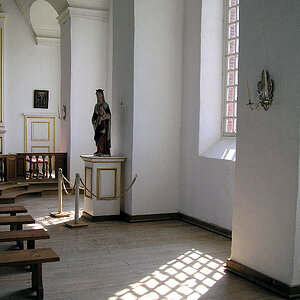

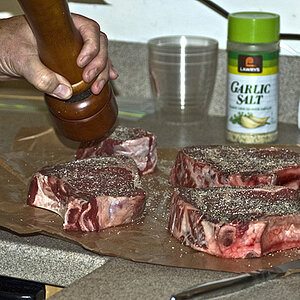
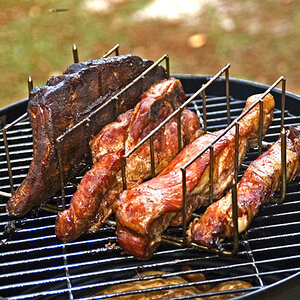
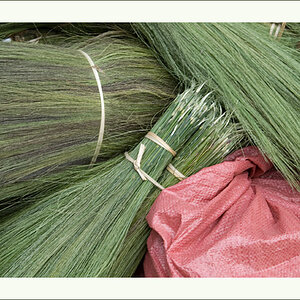
![[No title]](/data/xfmg/thumbnail/42/42054-e8278f89f6a543cad8fd644e37b064f3.jpg?1619739992)
